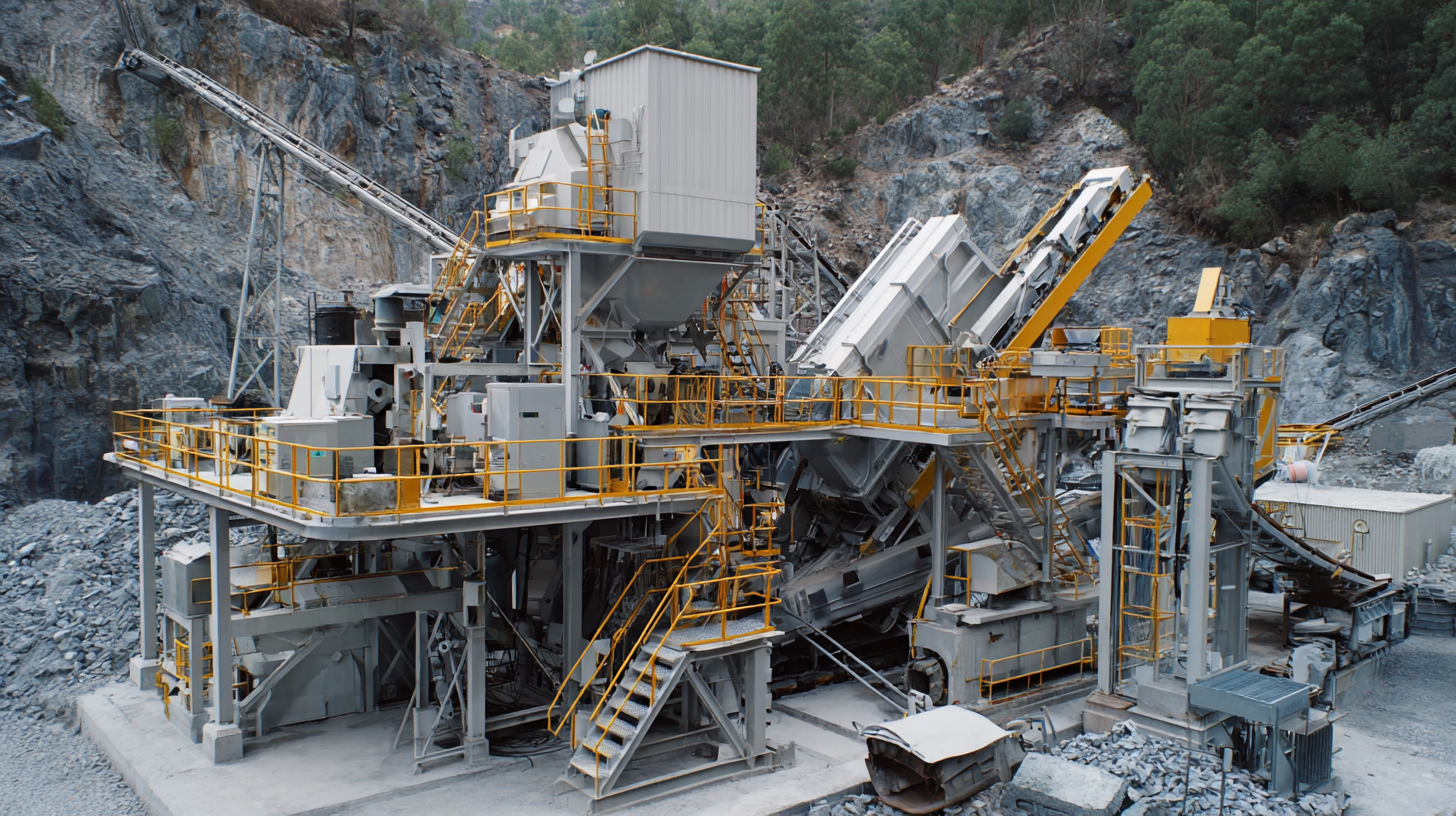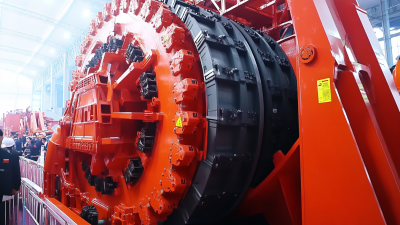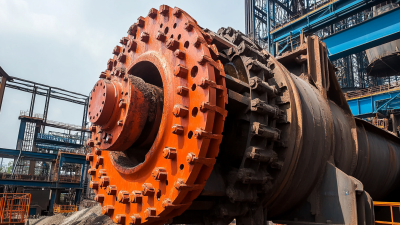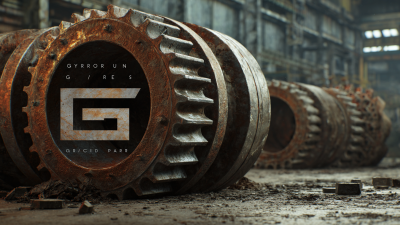
-
Home
-
About Us
-
Products
-
News
-
Blog
-
Contact Us
Leave Your Message

The Gyratory Crusher plays a pivotal role in modern quarry operations, fundamentally transforming material processing and efficiency. According to a report by Grand View Research, the global mining equipment market is anticipated to reach $368.99 billion by 2025, with crushers like the gyratory variant contributing significantly to this expansion. These machines are engineered to handle large volumes of material, significantly speeding up the crushing process while maintaining high levels of energy efficiency. Moreover, a study from the Mining Industry Association indicates that using a Gyratory Crusher can improve aggregate production rates by up to 30%, showcasing their effectiveness in optimizing operations. As quarry companies increasingly seek innovative solutions to enhance productivity and reduce costs, understanding the mechanics and advantages of the Gyratory Crusher is essential for unlocking new potentials in material handling and processing techniques.

The fundamental design principles of gyratory crushers revolve around their unique structure and operating mechanics, which contribute significantly to their efficiency in crushing and processing materials in quarry operations. Unlike traditional crushers, gyratory crushers feature a circular motion and a conical shape that allows for more effective fragmentation of materials. The central shaft is supported by a large spherical bearing, enabling it to rotate with minimal friction, which enhances the machine's durability and reduces maintenance needs.
In a gyratory crusher, as the conical mantle rotates, it exerts pressure on the material fed into the crushing chamber. This design facilitates a continuous and consistent crushing action, allowing for the processing of larger volumes of stone and aggregate. The wider opening at the top allows for larger feed sizes, while the tapered bottom efficiently channels the crushed material out of the chamber. As a result, this design principle not only maximizes throughput but also improves the overall efficiency of quarry operations, allowing businesses to meet production demands more effectively.
Gyratory crushers play a pivotal role in the modern quarry operations due to their capacity to handle large volumes of material efficiently. Key components of a gyratory crusher include the concave, mantle, and spider arm assembly, each designed for specific functions that ensure optimal crushing performance. The concave is a fixed surface that guides the material downward as it’s crushed by the mantle. The mantle, which moves in a circular motion, exerts pressure throughout the crushing process, breaking down the material into smaller, manageable pieces. According to a report by Allied Market Research, the global gyratory crusher market is expected to reach $4.85 billion by 2027, illustrating the demand for efficient and reliable crushing equipment in the extraction industry.
Another essential part of the gyratory crusher is the drive mechanism, which is typically a large, high-torque motor that provides the necessary power for the mantle's rotation. This drive not only helps in crushing the material but also ensures that the machine runs smoothly, even under heavy loads. The efficiency of these crushers is reflected in their ability to yield high throughput rates, often exceeding 3,000 tons per hour, as noted in industry studies. Such performance metrics underscore the critical nature of understanding and maintaining the key components of gyratory crushers, as they directly influence operational efficiency and output quality in quarry settings.
Gyratory crushers play a pivotal role in enhancing efficiency within quarry operations. These machines are designed to handle large volumes of material, crushing rock with precision while maintaining a consistent output size. The unique design of the gyratory crusher, with its rotating mantle and stationary bowl, allows for a continuous crushing process, which significantly reduces downtime. This efficiency means that quarries can produce more crushed stone in less time, ultimately leading to increased profitability.
Moreover, the advanced technology incorporated in modern gyratory crushers improves operational control. Features such as hydraulic adjustment systems enable operators to easily modify the crusher settings to optimize performance based on the materials being processed. This adaptability not only enhances productivity but also minimizes wear and tear on the equipment, resulting in lower maintenance costs. As a result, gyratory crushers have become indispensable in achieving higher efficiency and better resource management in quarry operations, driving the industry forward.
When it comes to quarry operations, understanding the differences between gyratory crushers and other types is crucial for optimizing efficiency and productivity. Gyratory crushers boast a unique design that allows them to handle larger volumes of material compared to cone or jaw crushers. This makes them especially effective for primary crushing, where large rock lumps need to be broken down into manageable sizes.
In a comparative analysis, gyratory crushers typically offer a higher throughput and a more consistent product size. They excel in processing tough materials due to their continuous crushing mechanism, whereas other crushers may have more intermittent operation. However, it’s essential to consider factors such as maintenance requirements and operational costs. While gyratory crushers may come with higher upfront costs, their durability and efficiency can lead to lower long-term expenses.
**Tips:** Always evaluate the specific needs of your operation before selecting a crusher type. For instance, if your quarry primarily handles softer materials, a jaw or cone crusher might provide sufficient output with less energy consumption. Additionally, ensure that your chosen crusher is compatible with the existing production line to avoid costly modifications.

In modern quarry operations, maintaining optimal performance of gyratory crushers is crucial for operational efficiency. As mining companies increasingly adopt digital technologies, service providers play a key role in enhancing maintenance activities. Innovative asset performance management strategies can significantly boost productivity, reversing a long-standing trend of decline in the mining sector. For example, data suggests that effectively managing these critical crushers can lead to productivity gains of up to 20%, emphasizing the importance of regular maintenance and timely interventions.
**Tips for Maintenance Best Practices:**
- Implement predictive maintenance strategies that utilize real-time data to anticipate service needs and minimize downtime.
- Regularly inspect and replace wear parts to ensure peak operational efficiency and prevent costly breakdowns.
- Optimize control systems not just for efficiency but also for energy consumption, as crushers account for a substantial portion of operational costs.
Moreover, advancements in crusher technology have paved the way for better operator safety and easier maintenance procedures. The latest designs prioritize access for maintenance tasks, promoting a safer work environment while allowing operators to focus on maximizing throughput without compromising safety. Implementing these best practices ensures that gyratory crushers remain reliable assets in quarry operations, driving long-term success.






